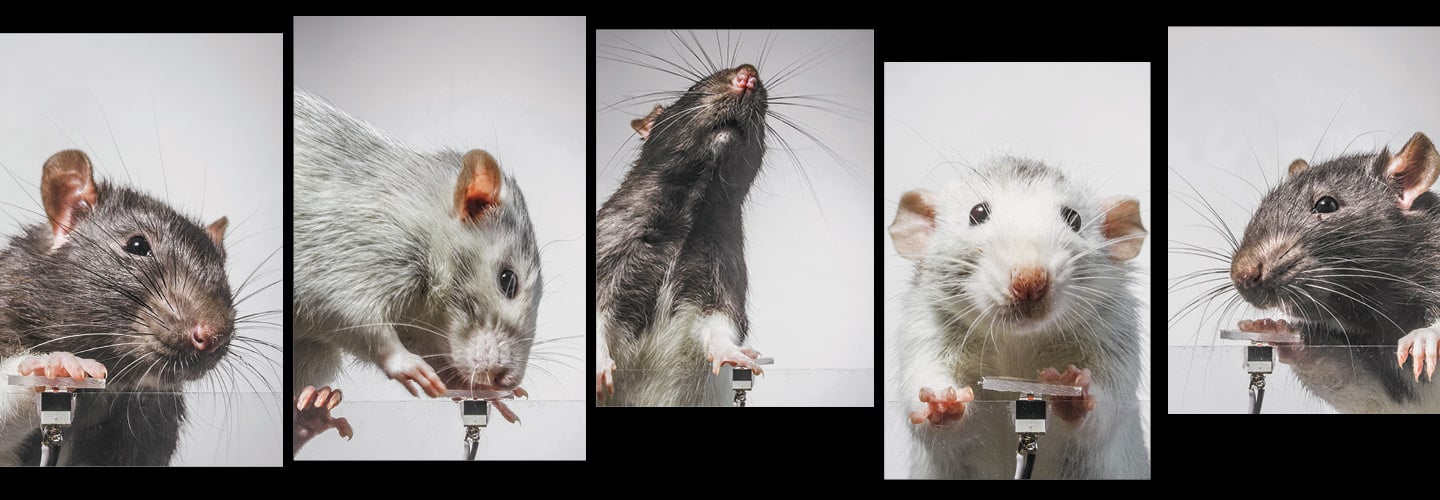Augustin Lignier
Two rats took part in an experiment that might shed light on human social media habits. They snapped photos by hitting a button in a transparent box with an attached camera.
Rodents just might like taking selfies as much as humans do. French photographer Augustin Lignier has long wondered why people feel compelled to photograph their lives and share those images online—so he recently turned to two pet-store rats for an experiment. Lignier built a tall, transparent tower with an attached camera; whenever the rats pressed a button inside the box, they got a dose of sugar and the camera snapped their photo. The resulting images (some of which are shown here) were immediately displayed on a screen where the rats could see them. Although Lignier doesn’t think they understood what they were looking at, the rodents quickly became enthusiastic button pushers, even in later stages of the experiment, when the treats were doled out only occasionally. Sometimes the rats even ignored the sugar when it arrived and kept pressing the button instead. Lignier compares this with the way humans are glued to their phones, which also dole out periodic, unpredictable rewards such as likes and follows. “Digital and social media companies use the same concept,” he says, “to keep the attention of the viewer as long as possible.”

